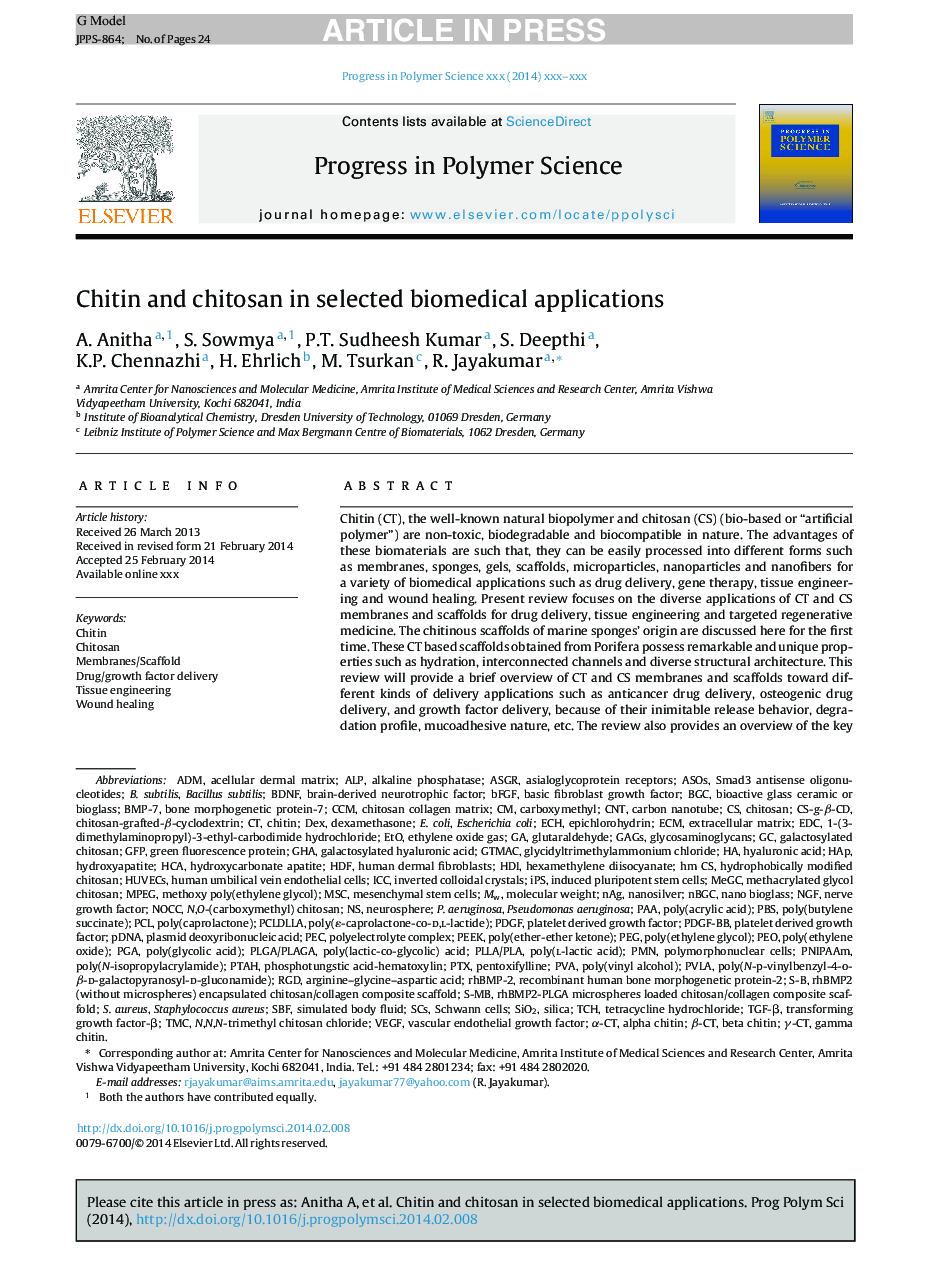| Article ID | Journal | Published Year | Pages | File Type |
|---|---|---|---|---|
| 5208121 | Progress in Polymer Science | 2014 | 24 Pages |
Abstract
Chitin (CT), the well-known natural biopolymer and chitosan (CS) (bio-based or “artificial polymer”) are non-toxic, biodegradable and biocompatible in nature. The advantages of these biomaterials are such that, they can be easily processed into different forms such as membranes, sponges, gels, scaffolds, microparticles, nanoparticles and nanofibers for a variety of biomedical applications such as drug delivery, gene therapy, tissue engineering and wound healing. Present review focuses on the diverse applications of CT and CS membranes and scaffolds for drug delivery, tissue engineering and targeted regenerative medicine. The chitinous scaffolds of marine sponges' origin are discussed here for the first time. These CT based scaffolds obtained from Porifera possess remarkable and unique properties such as hydration, interconnected channels and diverse structural architecture. This review will provide a brief overview of CT and CS membranes and scaffolds toward different kinds of delivery applications such as anticancer drug delivery, osteogenic drug delivery, and growth factor delivery, because of their inimitable release behavior, degradation profile, mucoadhesive nature, etc. The review also provides an overview of the key features of CT and CS membranes and scaffolds such as their biodegradability, cytocompatibility and mechanical properties toward applications in tissue engineering and wound healing.
Keywords
HCANAGADMNGFECHHDFICCEToPAAHDIGFPbFGFASOSMSCB. subtilismPEGHUVECSPBSGHAECMHydrophobically modified chitosanhexamethylene diisocyanateASGRE. coliBGCBMP-7CNTBacillus subtilisDEXP. aeruginosaPCLGAGsEDCBDNFCCmiPSALPAlkaline phosphataseHydroxycarbonate apatiteHyaluronic acidEscherichia coliEpichlorohydrinDexamethasoneHuman umbilical vein endothelial cellsMesenchymal stem cellsInduced pluripotent stem cellsPseudomonas aeruginosanerve growth factorbasic fibroblast growth factorBrain-derived neurotrophic factorHuman dermal fibroblastsExtracellular matrixAcellular dermal matrixMethoxy poly(ethylene glycol)NanosilverCarbon nanotubeNeurosphereHydroxyapatiteMolecular weightGreen fluorescence proteinBone morphogenetic protein-7Poly(butylene succinate)Poly(caprolactone)poly(acrylic acid)carboxymethylgalactosylated chitosanChitosanChitinHApGlutaraldehydeglycidyltrimethylammonium chlorideGlycosaminoglycansAsialoglycoprotein receptors
Related Topics
Physical Sciences and Engineering
Chemistry
Organic Chemistry
Authors
A. Anitha, S. Sowmya, P.T. Sudheesh Kumar, S. Deepthi, K.P. Chennazhi, H. Ehrlich, M. Tsurkan, R. Jayakumar,
